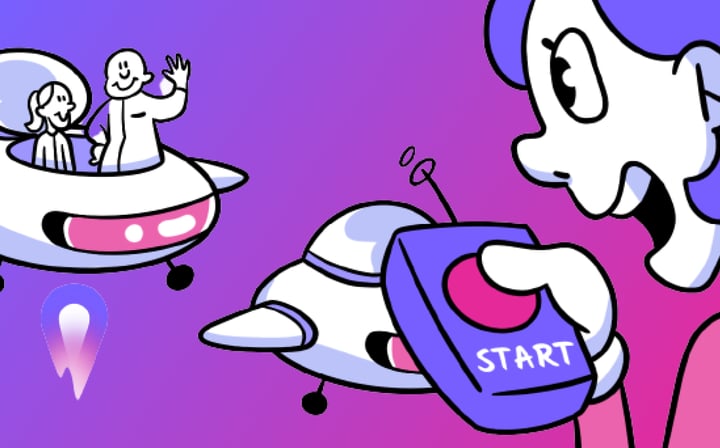Time on Task: Proven Strategies for Enhanced Productivity
Maximizing Time on Task: Strategies for Improved Productivity. Time is a finite resource that we all wish we had more of. Whether it’s finishing a work project, completing household tasks, or pursuing personal goals, finding ways to maximize our time on task is essential for improved productivity. In this article, we will explore various strategies and techniques to help you make the most out of your time and achieve optimal productivity.
🔩 The Nuts and Bolts:
- Time on Task Enhances Productivity: Focusing dedicated time on specific tasks increases productivity by eliminating distractions and maintaining focus.
- Effective Time Management is Crucial: Proper planning, organizing, and prioritizing tasks ensure that your time is utilized efficiently, reducing stress and increasing output.
- Identify and Eliminate Time Wasters: Recognizing common distractions such as excessive social media use or unnecessary meetings helps in creating a more focused work environment.
- Single-Tasking Over Multitasking: Focusing on one task at a time enhances efficiency and quality of work, contrary to the common belief that multitasking is productive.
- Regular Breaks Boost Productivity: Taking short breaks during work helps recharge your brain, maintaining focus and preventing burnout.
- Utilize Productivity Tools: Implementing task management apps and project management software streamlines workflow and helps in maintaining organized task lists.
- Build Sustainable Habits: Long-term productivity is achieved by integrating effective time management techniques into daily routines and maintaining consistency.
Understanding the Concept of Time on Task
The first step in maximizing time on task is understanding the concept itself. Time on task refers to the dedicated time spent actively working on a specific task or goal. It focuses on eliminating distractions and staying focused on the task at hand.
When delving deeper into the concept of time on task, it’s essential to consider the psychological aspect as well. Research has shown that individuals vary in their ability to maintain focus and concentration on a task, known as attentional control. By improving attentional control through techniques such as mindfulness and cognitive strategies, one can enhance their time on task and overall productivity.
The Importance of Time Management in Productivity
Effective time management is the key to productivity. It involves planning, organizing, and prioritizing tasks to ensure that your time is utilized efficiently. By managing your time effectively, you can eliminate unnecessary stress and increase your overall productivity.
Furthermore, time management is not just about allocating time to tasks but also about recognizing your peak productivity hours. By aligning your most challenging tasks with your peak energy levels, you can optimize your performance and achieve better results in less time.
Defining ‘Time on Task’
Time on task is not just about logging in hours; it is about how effectively you utilize that time. It’s about working on high-priority tasks that align with your goals and tackling them with focus and determination. By understanding what constitutes time on task, you can prioritize your activities accordingly.
In addition to task prioritization, another crucial aspect of maximizing time on task is minimizing multitasking. Contrary to popular belief, multitasking can actually decrease productivity as it divides your attention and reduces the quality of work. By focusing on one task at a time and giving it your full concentration, you can enhance your time on task and achieve better outcomes.
Identifying Time Wasters and Distractions
In order to make the most out of your time, it’s essential to identify and eliminate common time wasters and distractions. These can include interruptions from colleagues, excessive use of social media, or getting caught up in unimportant tasks.
One important aspect of identifying time wasters and distractions is understanding the concept of “time thieves.” These are activities or habits that may seem harmless at first but end up consuming a significant portion of your day. Examples of time thieves include constantly checking your phone for notifications, engaging in lengthy discussions that are not work-related, or procrastinating on important tasks.
Make your design decisions count.
Subscribe to Design Under Pressure. Get insights, UX metrics, and tools for bold, informed design.
We respect your inbox. Just insights. No fluff. Privacy Policy.
Common Workplace Distractions
In the workplace, distractions can come in various forms, such as unnecessary meetings, excessive email checking, or non-work-related conversations. By addressing and minimizing these distractions, you can create a more focused and productive work environment.
It’s also crucial to recognize the role of “decision fatigue” in contributing to distractions. Decision fatigue occurs when the quality of our decisions deteriorates after making numerous choices throughout the day. This mental exhaustion can make us more susceptible to distractions and temptations, ultimately impacting our productivity levels.
The Impact of Multitasking on Productivity
Many of us pride ourselves on our ability to multitask, but research shows that it can actually hinder productivity. Attempting to juggle multiple tasks simultaneously divides our attention and leads to decreased efficiency. Focusing on one task at a time allows us to give it our full attention and complete it more effectively.
To combat the allure of multitasking, experts recommend practicing mindfulness and being fully present in the task at hand. By immersing yourself in the present moment and concentrating on the singular activity you are engaged in, you can enhance your productivity and reduce the negative impact of distractions.
Techniques for Maximizing Time on Task
Now that we understand the importance of time on task and the need to eliminate distractions, let’s explore some techniques to help you make the most out of your time:
Efficient time management is crucial for productivity and success in any endeavor. By mastering the art of maximizing time on task, individuals can significantly enhance their output and achieve their goals more effectively.
Prioritizing Tasks for Maximum Efficiency
Start by identifying the most important tasks that need to be completed. Prioritizing tasks allows you to address the most critical ones first and ensure that they receive your full attention. By tackling high-priority tasks first, you can make significant progress toward your goals.
Additionally, categorizing tasks based on their urgency and importance can provide a clear roadmap for your day. Utilizing tools such as Eisenhower’s Urgent/Important Principle can help you distinguish between tasks that require immediate attention and those that can be delegated or postponed.
UX Metric
The Role of Breaks in Sustaining Productivity
While it may seem counterintuitive, taking regular breaks can actually improve productivity. Our brains need time to rest and recharge, and breaks provide the necessary opportunity for rejuvenation. Incorporate short breaks throughout your workday to maintain focus and prevent burnout.
Moreover, the Pomodoro Technique, a time management method developed by Francesco Cirillo, advocates for working in focused sprints followed by short breaks. This approach not only enhances productivity but also helps individuals maintain a sustainable pace throughout the day.
Implementing Time Management Tools and Techniques
In today’s digital age, there are numerous tools and techniques available to help manage your time effectively:
Time management is crucial in today’s fast-paced world, where distractions are abundant and demands on our time are ever-increasing. By implementing the right tools and techniques, you can take control of your schedule and boost your productivity.
Choosing the Right Productivity Tools
Utilize productivity tools such as task management apps, calendar apps, and project management software to streamline your workflow. Find the tools that work best for you and integrate them into your daily routine to enhance your productivity.
Task management apps like Trello or Asana can help you organize your tasks and collaborate with team members effectively. Calendar apps such as Google Calendar or Microsoft Outlook can assist in scheduling appointments and setting reminders. Project management software like Monday.com or Jira can help you track the progress of projects and allocate resources efficiently.
Techniques for Effective Time Tracking
Tracking your time allows you to identify patterns, assess how long tasks take, and make adjustments accordingly. Use time tracking apps or spreadsheets to monitor the time spent on different activities. This will help you identify areas where you can improve efficiency and optimize your time on task.
Time tracking can also reveal time-wasting activities or habits that may be hindering your productivity. By analyzing your time logs, you can make informed decisions on how to better allocate your time and focus on high-priority tasks.
🚀 If you’re using Helio
Measure time on task with feedback from your targeted audience.

Effective time management is the key to productivity.
Cultivating a Productive Mindset
Developing a productive mindset goes beyond just completing tasks; it’s about optimizing your mental approach to work and time management. By understanding the importance of mindset, you can enhance your productivity and overall well-being.
One aspect of cultivating a productive mindset is recognizing the power of positivity. Research has shown that individuals with a positive outlook tend to be more productive and resilient in the face of challenges. By practicing gratitude and reframing negative thoughts, you can shift your mindset towards one that is conducive to productivity.
The Power of Focus in Maximizing Time on Task
Concentration is key when it comes to productivity. Find strategies that work for you, such as breaking tasks into smaller, manageable chunks or utilizing techniques like the Pomodoro Technique. By staying focused and eliminating distractions, you can accomplish more in less time.
Moreover, incorporating mindfulness practices into your work routine can help enhance your focus and productivity. Mindfulness involves being fully present and engaged in the task at hand, which can lead to improved concentration and efficiency.
Building Habits for Long-Term Productivity
Productivity is not just about short bursts of intense work; it’s about building sustainable habits. Incorporate time management techniques into your daily routine and make them a part of your lifestyle. Consistency is key to establishing long-term productive habits.
Additionally, prioritizing self-care and work-life balance is essential for maintaining long-term productivity. Taking breaks, getting enough sleep, and engaging in activities that rejuvenate you can prevent burnout and help you sustain high levels of productivity over time.
By implementing these strategies and techniques, you can maximize your time on task and achieve improved productivity. Remember, it’s not about working longer hours; it’s about working smarter. By managing your time effectively, eliminating distractions, and cultivating a productive mindset, you can make the most out of every moment and achieve your goals.
Time on Task FAQs
Time on task refers to the dedicated time spent actively working on a specific task or goal, focusing on eliminating distractions and staying concentrated.
Time on task is important because it allows you to utilize your time efficiently, leading to increased productivity and the ability to complete tasks effectively.
Identify time wasters by analyzing your daily activities and recognizing patterns of distractions such as excessive social media use or unnecessary meetings. Eliminate these distractions by setting boundaries and creating a focused work environment.
Multitasking divides attention and reduces efficiency. Focusing on one task at a time ensures better quality of work and faster completion of tasks.
Regular breaks allow your brain to rest and recharge, maintaining focus and preventing burnout. Techniques like the Pomodoro Technique, which includes short breaks, are effective in sustaining productivity.
Utilize task management apps like Trello or Asana, and project management software like Monday.com or Jira to organize tasks, set reminders, and track progress efficiently.
Incorporate effective time management techniques into your daily routine, prioritize self-care, and maintain a balance between work and rest. Consistency in these practices leads to long-term productive habits.



